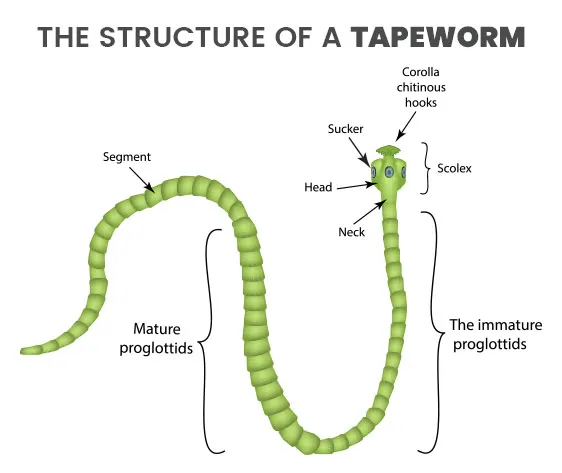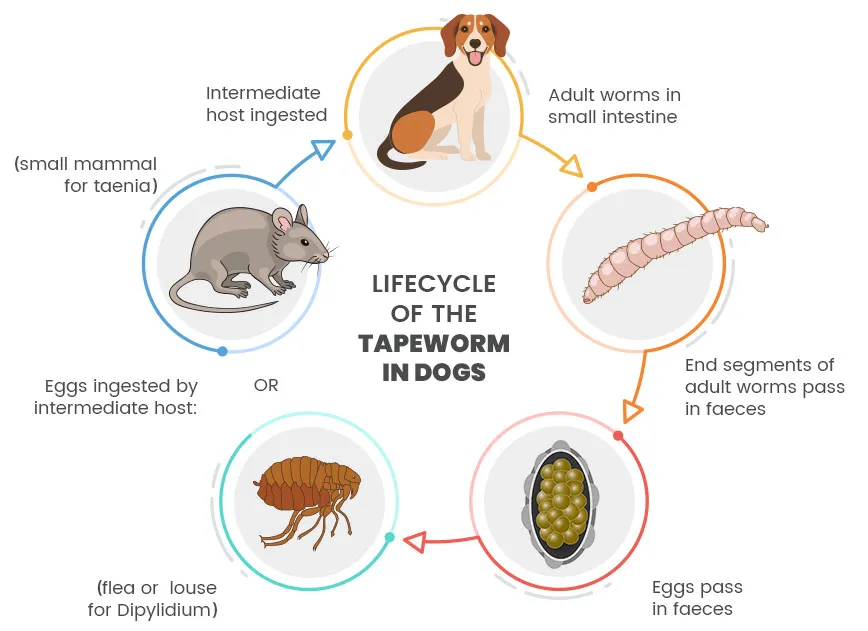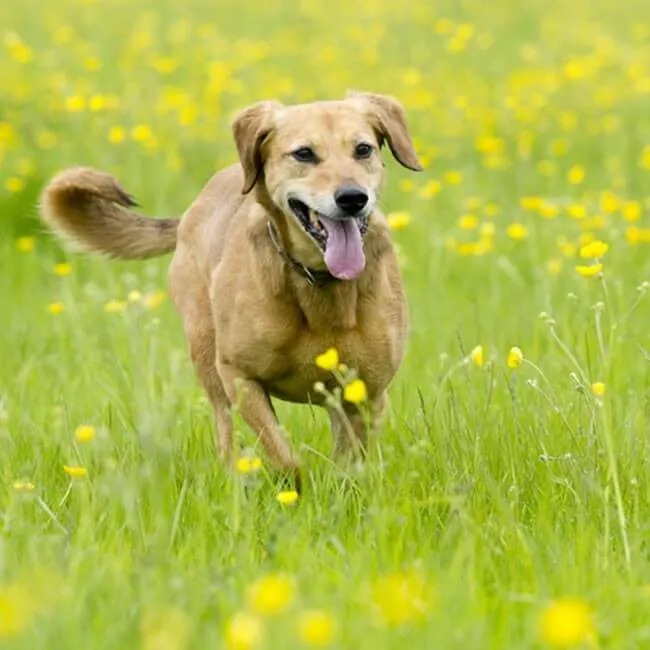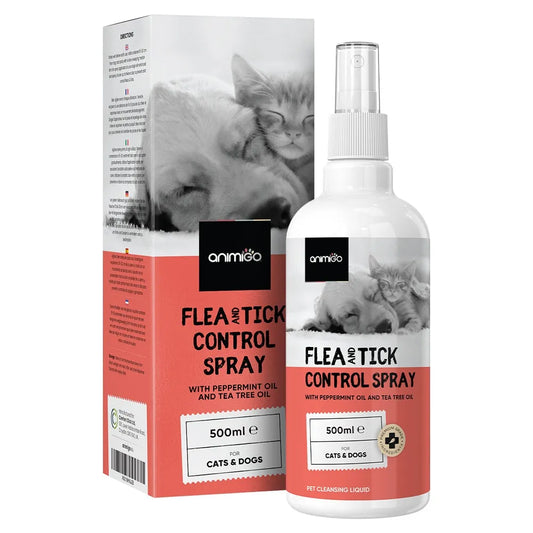How to Deal With Tapeworms in Dogs
Worried your dog may have a tapeworm? Tapeworms in dogs is not a pleasant issue but, unfortunately, is very popular amongst all ages of dogs. This is because a single adult tapeworm can produce around 1,000-2,000 proglottids (sections of a tapeworm with their own reproductive systems) with a massive 100,000 eggs! As a result, it is important that you know how dogs can get these parasites, the signs of tapeworms in dogs as well as the best ways to help get rid of them.
Worried your dog may have a tapeworm? Tapeworms in dogs is not a pleasant issue but, unfortunately, is very popular amongst all ages of dogs. This is because a single adult tapeworm can produce around 1,000-2,000 proglottids (sections of a tapeworm with their own reproductive systems) with a massive 100,000 eggs! As a result, it is important that you know how dogs can get these parasites, the signs of tapeworms in dogs as well as the best ways to help get rid of them.What is a tapeworm?

A type of parasite, tapeworms are one of the most common intestinal worms dogs can have. Luckily, these are not the most dangerous for dogs and many won’t even exhibit noticeable symptoms until seeing it in their stool. The main issue with tapeworms though, is that they can be passed onto humans where they can cause us issues. There are many different types of tapeworms that each come from their own host, meaning there are plenty of ways for you or your dog to obtain them. As a result, tapeworms in puppies and adult dogs are very common so it is important you know as much about them as possible
Types of Tapeworms
| Official Name | Intermediate host | Can humans get them? |
|---|---|---|
| Dipylidium Caninum | Fleas | Yes - From a contaminated flea |
| Taenia Hydatigena or Taenia Multiceps | Pigs, sheep, and goats | Yes - From contact with a dog with the worm |
| Taenia Pisiformis or Taenia Serialis | Rabbits and rodents | Yes - From infected beef |
| Echinococcus | Wildlife & livestock (e.g cattle & sheep) | Yes - From contact with a dog with the worm |
| Diphyllobothrium | Wildlife & raw/undercooked fish | Yes - From raw or undercooked fish |
What does a tapeworm look like?
A fully grown adult tapeworm looks flat, long (around 4-8 inches) and made up of lots of small segments. As they are only fully grown when successfully living inside your dog’s intestines, you’re not very likely to see a complete tapeworm. Instead, you will most commonly see segments of the tapeworm in stool or around your dog’s anus, often compared in appearance to grains of rice or small seeds. This is because tapeworms have proglottids, which are sections of their body with their own reproductive systems and full of the tapeworm eggs that can break off. If they have just been passed, then you may see these tapeworm segments as white and even slightly moving. If they have been detached for a while though, they can dry out and appear as hard yellow crystal-like specks.
How do dogs get tapeworms?
Tapeworms are a very common intestinal worm and, as a result, they can be quite easy for your dog to get. Tapeworms get passed around through an intermediate host. This means that their larvae develop in a smaller host before being passed to a dog where it can then mature (or another larger animal such as cats or humans). This is because a dog cannot be infected simply by the egg, but instead needs to consume the intermediate host, making the tapeworm life cycle in dogs slightly different to that of other intestinal worms.
There are many different intermediate hosts that each type of tapeworm thrives in. The most common is fleas, as these are already a large parasitic issue for dogs, but there are many others. This includes rabbits, rodents, birds, wildlife, cattle, farm animals and also raw or undercooked fish. This doesn’t mean you should be afraid of your dog going near where these animals may live or that you should avoid giving them meat and fish; your dog can only get tapeworms from these if they have been infected. If you take sensible precautions, such as not allowing your dog near dead animals and making sure you cook meat and fish thoroughly before giving it to your dog, then the risk can be dramatically reduced.
Tapeworm symptoms in dogs
When it comes to the signs of tapeworm in dogs, luckily they are one of the few intestinal parasites that can be visibly spotted in the stool. Tapeworms in dog poop often appear like small grains of rice and may also be found around their anus or on their bedding. If they get stuck to the hair around their anus, you may find your dog scooting their bottoms across the floor or licking and biting at the area as a result of the irritation. If you spot your dog doing this, before telling them off, have a visible look at the area yourself and see if this could be the issue before assuming it is something else.
As tapeworms don’t cause any internal issues, as other intestinal worms, their non-visible symptoms aren’t quite so obvious and can often be confused with other problems or illnesses. A serious tapeworm infestation can, however, show some signs apart from the visible worm segments in the stool. This includes in weight loss despite eating the same amounts and also vomiting if the worms make their way to your dog’s stomach.
Treatments for tapeworms in dogs
If you think your dog has tapeworms, there are ways you can try to help. Firstly, if you are unsure or think it could be serious, take your dog to the vet for a thorough diagnosis. They may require you to bring in a stool sample so that they can check your dog’s faeces for any visible signs of the worm. They can then help you with an appropriate tapeworm treatment for dogs that kills the tapeworm so it can be passed through into their stool. You can also ask for a tapeworm treatment for puppies if you think a mother may have passed it onto their litter. Your vet will also most likely suggest future preventative methods to help any worms from returning, which can be found through your vets or also through natural products online.
Preventative methods for tapeworms in dogs
- Use a preventative dog dewormer
- Keep away fleas
- Avoid potential intermediate hosts
- Keep their living area clean
- Wash your hands when spending time outdoors
The best way to deal with tapeworms in dogs is not to wait until you notice the signs and then do something, but to take preventative action to reduce the risk of them getting worms in the first place. Firstly, there are plenty of preventative tapeworm tablets for dogs available on the market that when used regularly can help with these pesky parasites. You can also get overall dog dewormers that can help with the prevention of a number of intestinal worms including tapeworms.

Another way to help prevent your dog from getting tapeworms is by using flea control as they are one of the most common intermediate hosts for the tapeworm larvae. This can be through either using a flea killer or deterrent or by avoiding areas known to have fleas or other animals with a flea infestation. In the same manner, you should also make sure your pooch avoids any of the other intermediate hosts, including rodents and wild animals and make sure they’re not eating raw or undercooked meat.
Other methods for reducing the risk of tapeworms in dogs, or to stop them returning, is to keep their living areas clean and tidy. This includes regularly washing their bedding, picking up their faeces and keeping their outdoor environment clean. If you have children that regularly play outside or have been in contact with an animal that may have tapeworms, also ensure they thoroughly wash their hands to stop it from spreading.























